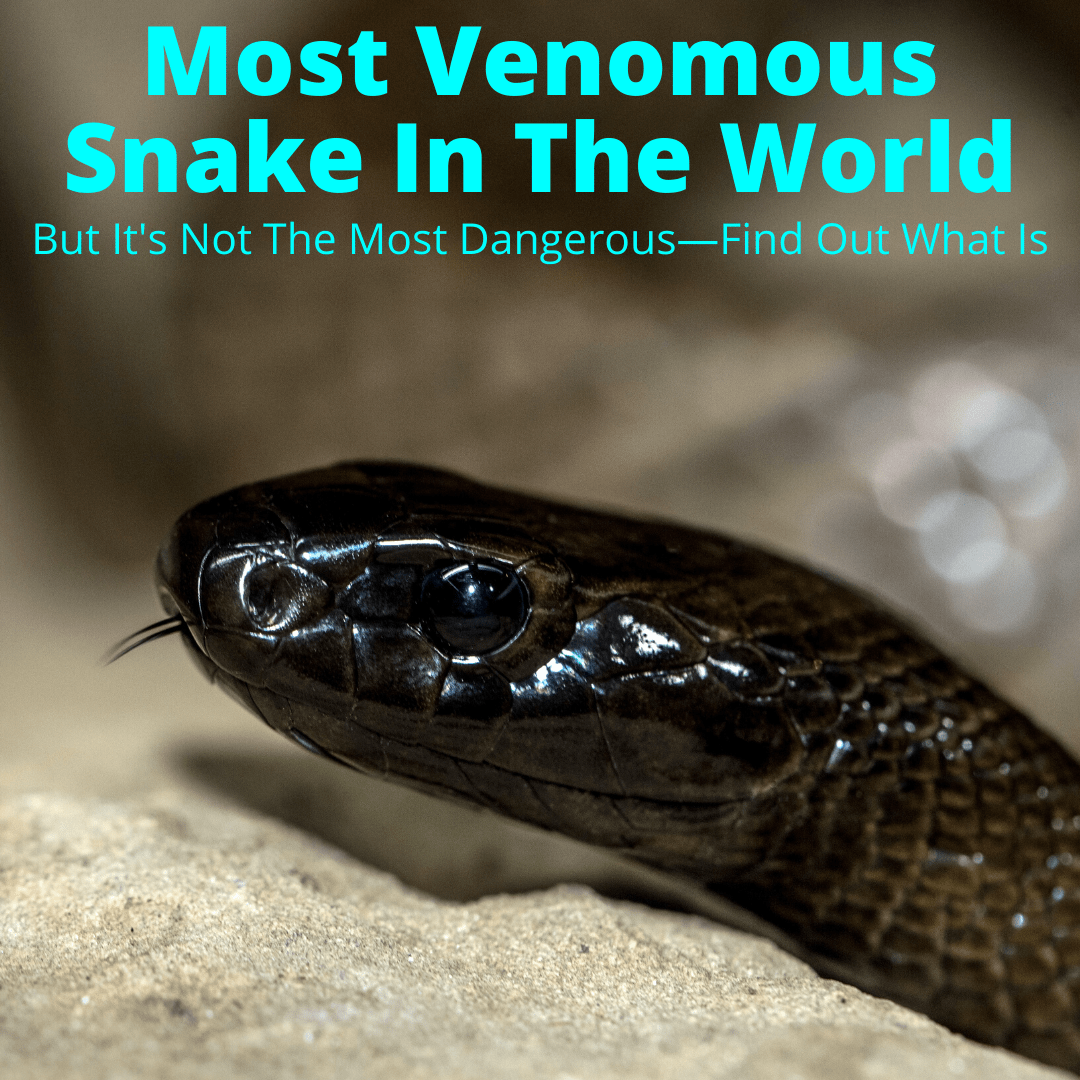
As such, it can’t be considered the most dangerous.
In fact, the world’s most venomous snake has never officially killed anyone, and has only bitten a few people.
That snake is the inland taipan.
It might top the list of venomous snakes, but most of the others on the list are much more dangerous.
And what is the most dangerous of all? That is debatable.
But the snake that kills the most people, over 130,000 per year, is the saw-scaled viper.
We will cover both of these deadly snakes below, starting with the inland taipan.
Table of Contents
Most Venomous Snake In The World: The Inland Taipan
The Inland Taipan was first discovered in 1879 near Mildura in Victoria, Australia. At first, it was called the small-scaled brown snake, because it was thought to be a member of the brown snake family.
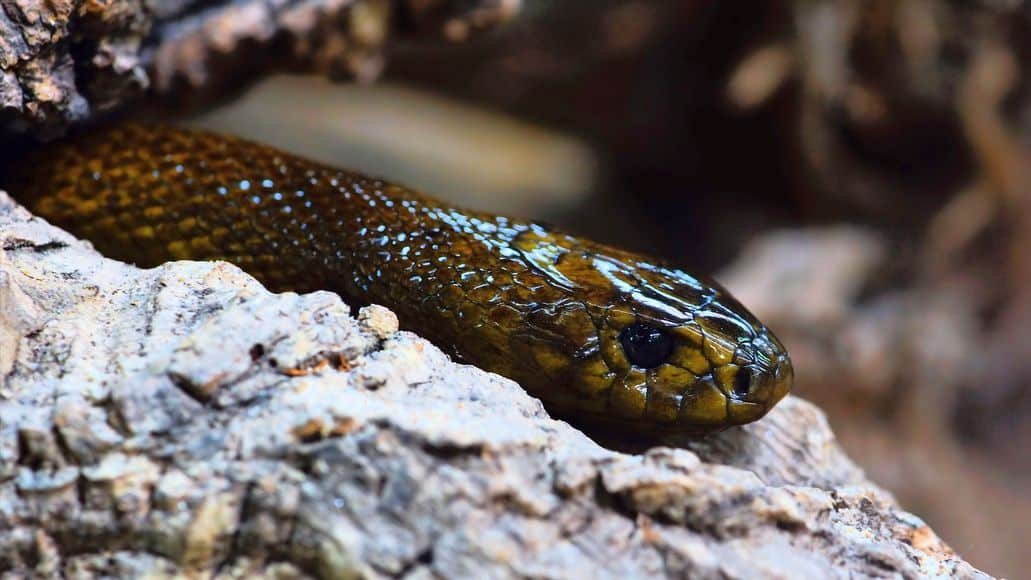
It wasn’t until 1896 that it was renamed the black snake. It kept that name for over 80 years, until 1981. That is when we finally realized that is is actually much more closely related to the coastal taipan and gave it the current name.
Inland taipan venom is 300 times more toxic than rattlesnake venom. A single bit from this snake can kill 70 human beings or 130,000 rats.
These snakes love to burrow and hide in unused rat holes. They do this to escape from the heat of the day, but also to escape from predators.
You wouldn’t think one of the most deadly animals on the planet has a predator, but it actually has several. The king brown snake and the Perentie Lizard have both been known to feast on the inland taipan.
Inland Taipan Size
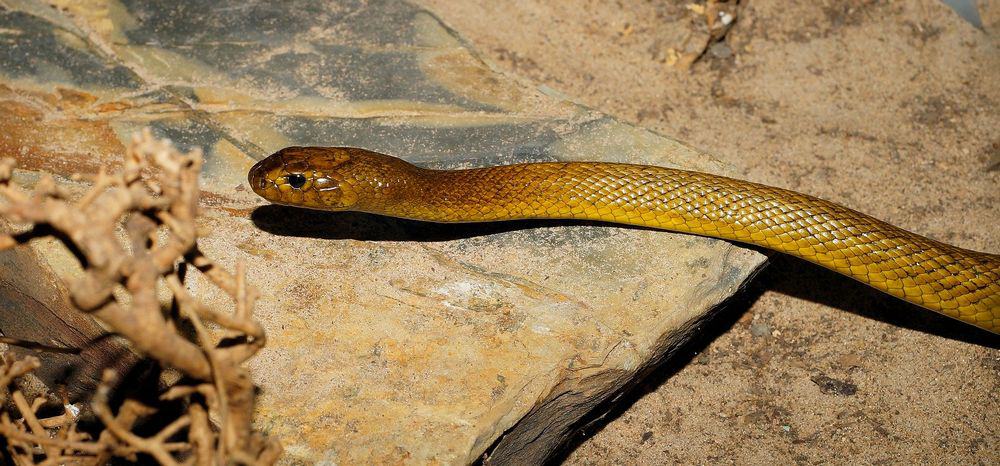
These snakes can range from 5.5 feet to 9 feet long. They take up to 3 years to grow to their full length. When fully grown, they weigh around 5 pounds.
You’ll notice, this species has none of the features that can indicate a snake is venomous. It does not have a triangular head or bright colors of patterns. It just goes to show that knowing which snakes have venom is not always possible, unless you have knowledge about that specific species.
Inland Taipan Vs Black Mamba
The venom of the inland taipan is more deadly than that of the black mamba, one of the longest snakes in Africa. But that does not mean that the inland taipan is more dangerous.
There are many more reported cases of people dying from black mamba bites. There are a couple of reasons for this.
First, the black mamba is about 4 times more aggressive than the inland taipan. It will attack you without thinking too hard about it. It also slithers faster than almost any other snake.
The main reason is that the black mamba lives in Africa, where antivenom is less available. Even though snake bites occur fairly frequently, most medical centers in those areas are not able to treat black mamba bites. The closest medical center that has antivenom is often hundreds of miles away.
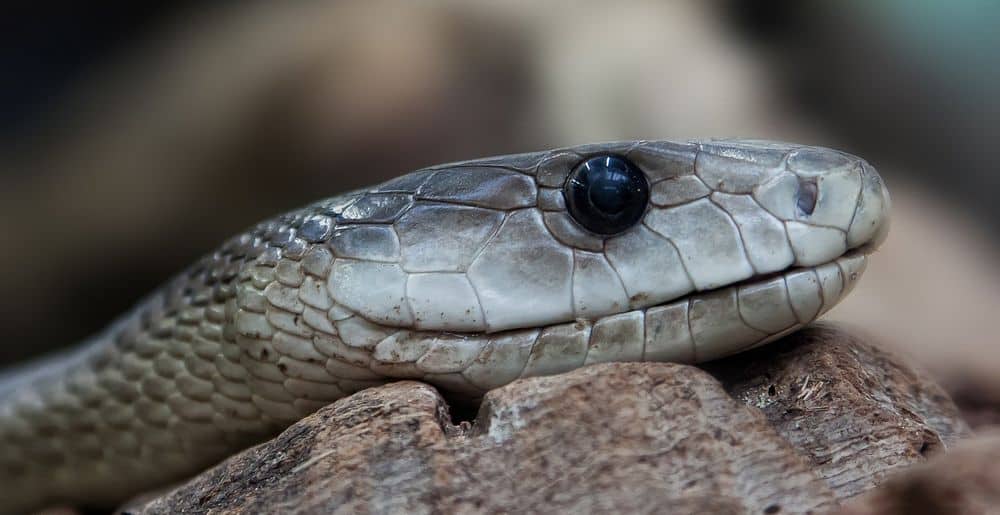
On the other hand, the inland taipan lives in the inland of Australia. Since most of the human population of Australia lives near the coastal areas, people rarely encounter these snakes. In addition, antivenom is widely available in most medical centers in Australia for immediate treatment.
Inland Taipan Behavior
This is an extremely shy snake that will try very hard to escape an encounter with humans and wants to avoid attacking if at all possible. Most attacks happen when a snake feels it is in imminent danger and has no other option.
In nature, they are very gentle creatures that only bite when they want to eat. Most of the time, they stay away from anything that moves. When the snake feels threatened, it will flatten its throat. That would be a great time to get far away from it.
Inland Taipan Diet
The inland taipan usually goes into rat holes and finds its food there. They corner their prey and strike. Then they wait until the rat has almost died, before the begin to eat it.
Their strike causes death in a couple of seconds. In addition to rats, they also eat small mice or the odd frog, if a frog passes by when they are hungry. They sometimes also eat birds.
Inland Taipan Bite
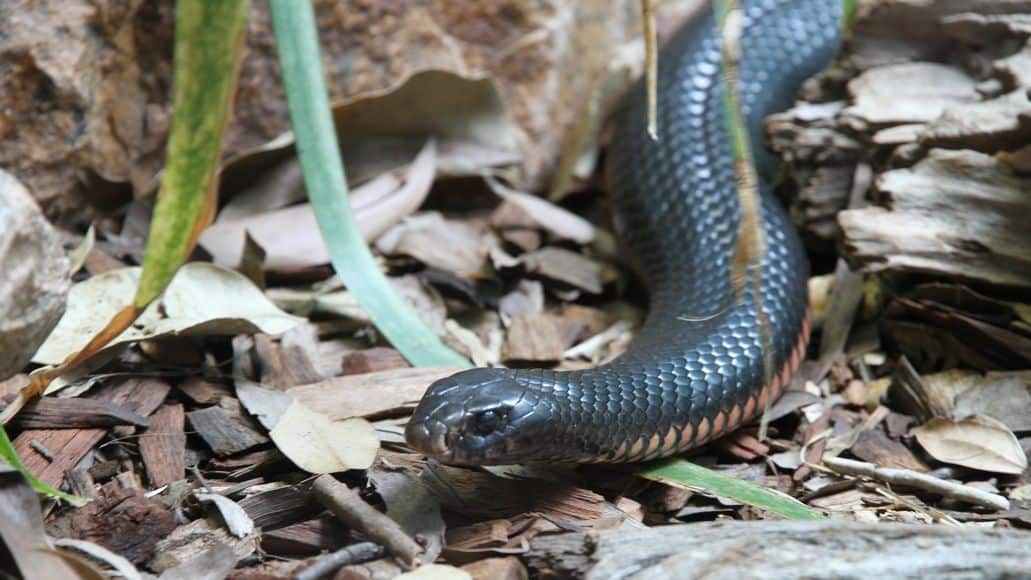
A bite from the inland taipan can kill a human being in 45 minutes. The snake does not strike only once. They usually strike you 2 to 5 times with a dose of venom injected with each bite. The venom immediately attacks your nervous system.
Your life is in danger, if you are bitten in a remote area away from medical treatment. If you do survive a bite from this snake, it will take a few weeks to fully recover. Some people have reported being paralyzed after recovering with medical treatment.
What To Do If You Get Bitten
- Stay calm and do not panic.
- If you are close to a hospital make your way there immediately and ideally have someone else drive.
- Take a picture of the snake so you can be sure what bit you and make it easy for doctors to administer the correct anti-venom.
Inland Taipan Facts
- The skin changes depending on the season. In summer the snake has a lighter, almost yellow color. In winter it is much darker, almost a dark brown/black.
- This snake is especially active in the morning and prefers hunting at night during summer.
- It can live up to 13 years in the wild and up to 22 years in captivity.
- No one has ever died from this snake’s bite. Only 2 people are on record as having been bitten in the wild and both were out actively searching for the snakes. The other recorded bites were all people who got bitten while caring for the snakes in captivity.
Most Dangerous Snake In The World: The Saw-Scaled Viper
The snake that kills the most people is the saw-scaled viper (Echis carinatus). This makes it the most deadly, so it should be considered the most dangerous snake in the world.
The saw-scaled viper originates from the northern parts of Africa, Asia, Sri Lanka, and India. It is a small snake and does not grow more than 35 inches in length. It is very hard to see in the wild and super aggressive. It will attack you in the blink of an eye.
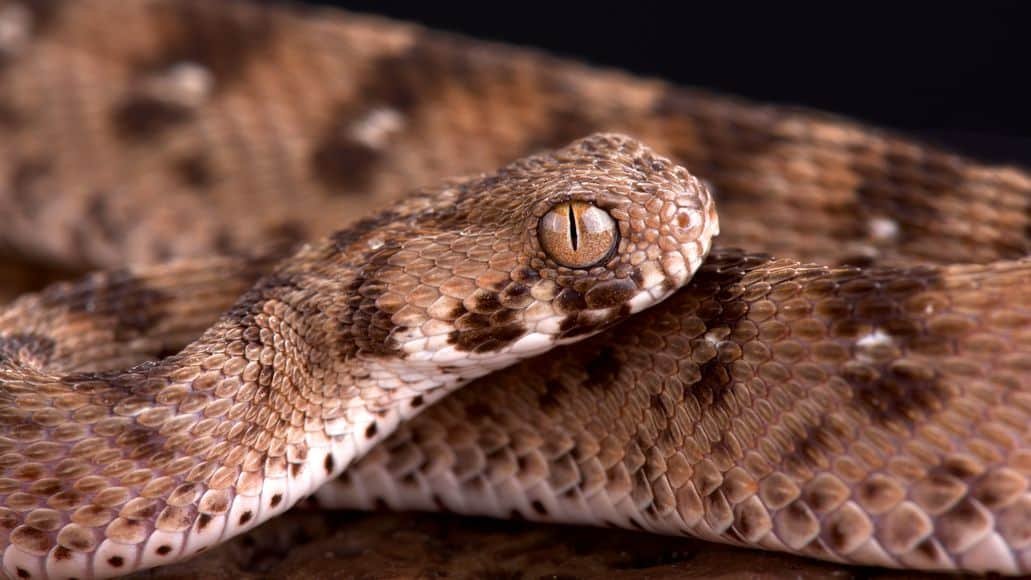
This snake accounts for nearly 700,000 bites per year. The reason for this is that they live in the same areas that humans live and that they are very difficult to detect before it is too late.
Out of the 700,000 bites per year, nearly 135,000 people die. This is a staggering amount of deaths from one species.
Saw-Scaled Viper Bite
There is no antivenom that counteracts the effects of saw-scaled viper venom. As a result, the best thing you can do is go to a hospital and let the bite finish its course.
When bitten swelling begins immediately and can spread to large areas. One bite from this snake can kill 3 grown adults. The tissue around the bite will dissolve and you will suffer immense pain.
The venom is so destructive that fingers or toes can simply fall off during the healing process. Most people will take up to six months to recover. And the majority of them suffer renal failure.
Saw-Scaled Viper Behavior
Saw-scaled vipers are nocturnal. 80% of the time, they hunt at night. During the day, they usually hide behind a rock or other hiding place of their choice. There have been some reports of these snakes hunting during the day time.
They are very aggressive and will coil themselves up and strike with no notice. But they do often give a warning. When the snake is threatened it will rub its scales together to produce a unique sound.
These snakes move very quickly in the sand. Their fastest way of moving is to move sideways, which is also known as sidewinding.
Saw-Scaled Viper Diet
This snake will eat anything from scorpions, to centipedes and other insects, to mice, rats, and frogs. They will, at times, even eat birds. The saw-scaled viper will almost eat anything that moves near it.
Most Venomous Snake In The US
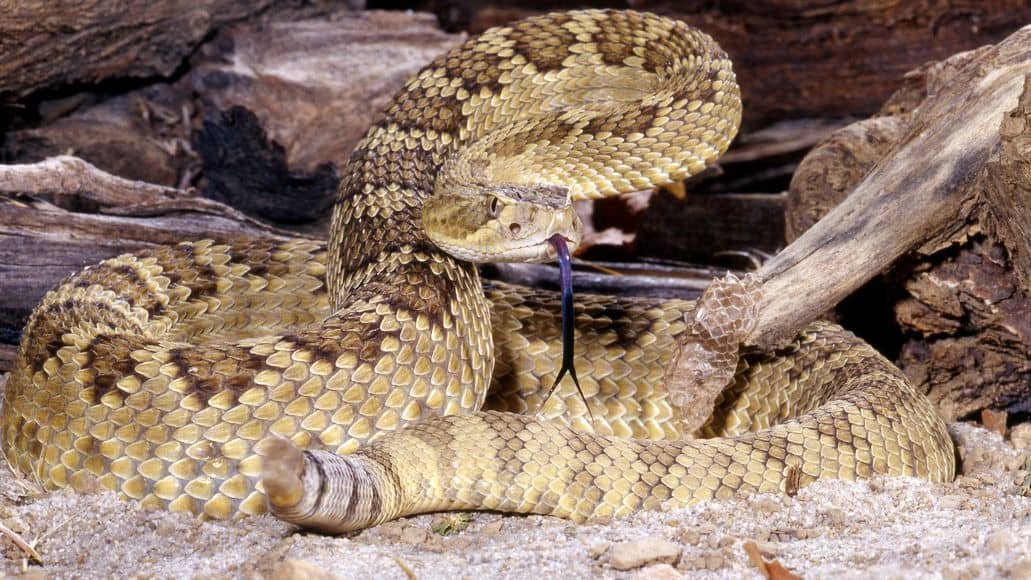
The chances of dying from a venomous snake bite in the United States is virtually 0%. You are more likely to be killed by a lightning strike than by a venomous snake.
With that said, it does not mean that you should take venomous snakes in the US lightly.
The rattlesnake is the most widely populated snake in the USA and for this reason, can be classified as the most dangerous.
Rattlesnake venom is hemotoxic. This means that it attacks the red blood cells, which causes damage to your internal organs and can lead to death if not treated.
Common rattlesnakes include the Mojave Rattler, the Western Diamondback, the Eastern Diamondback, the Sidewinder Timber Rock and the Pygmy Rattlesnake. All are known for the distinctive rattle at the end of their tail.
World’s Most Venomous Snake: Final Thoughts
Knowing the difference between venomous and dangerous is important when dealing with these types of snakes. Venomous does not always mean that they are dangerous.
Some of the most venomous snakes are also the shyest snakes and will try their utmost to escape. Most of the time, they will only strike when they cannot escape.
Dangerous snakes, on the other hand, are very aggressive and will want to bite you. An aggressive semi-venomous snake can be far more deadly than a docile one with a much more powerful venom.
Do you agree with our assessment that the saw-scaled viper is the most dangerous snake in the world? Let us know in the comments below.
Nelly Slatkin says
It was helpful. Keep on posting!